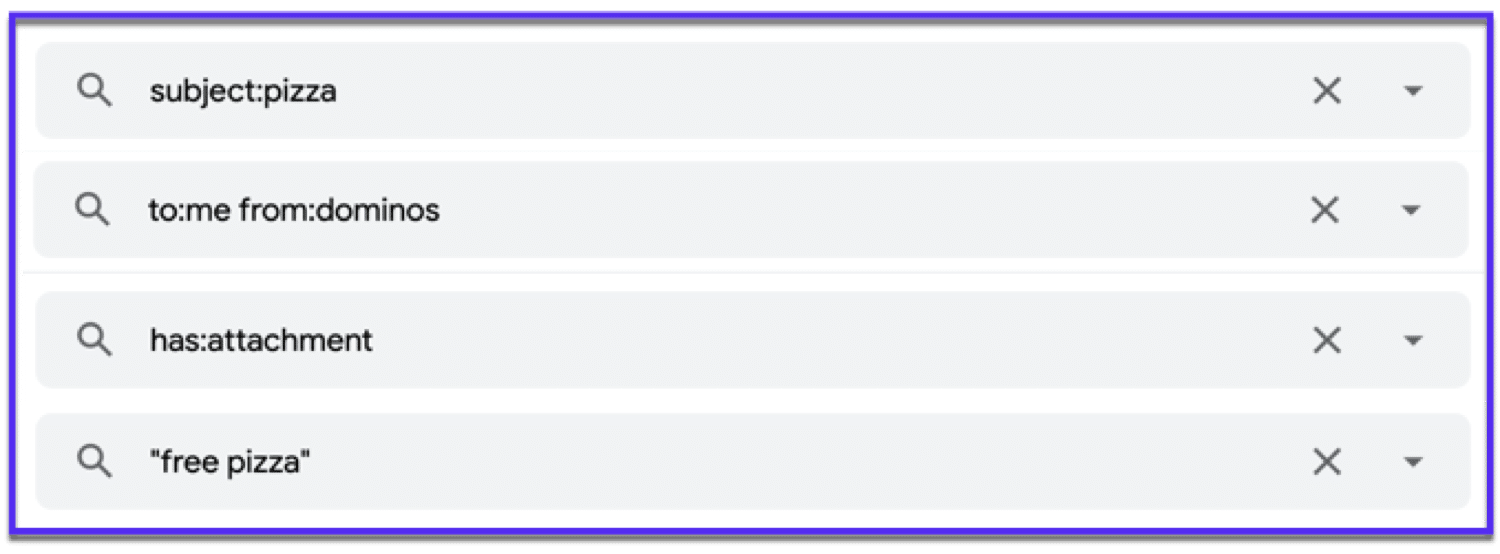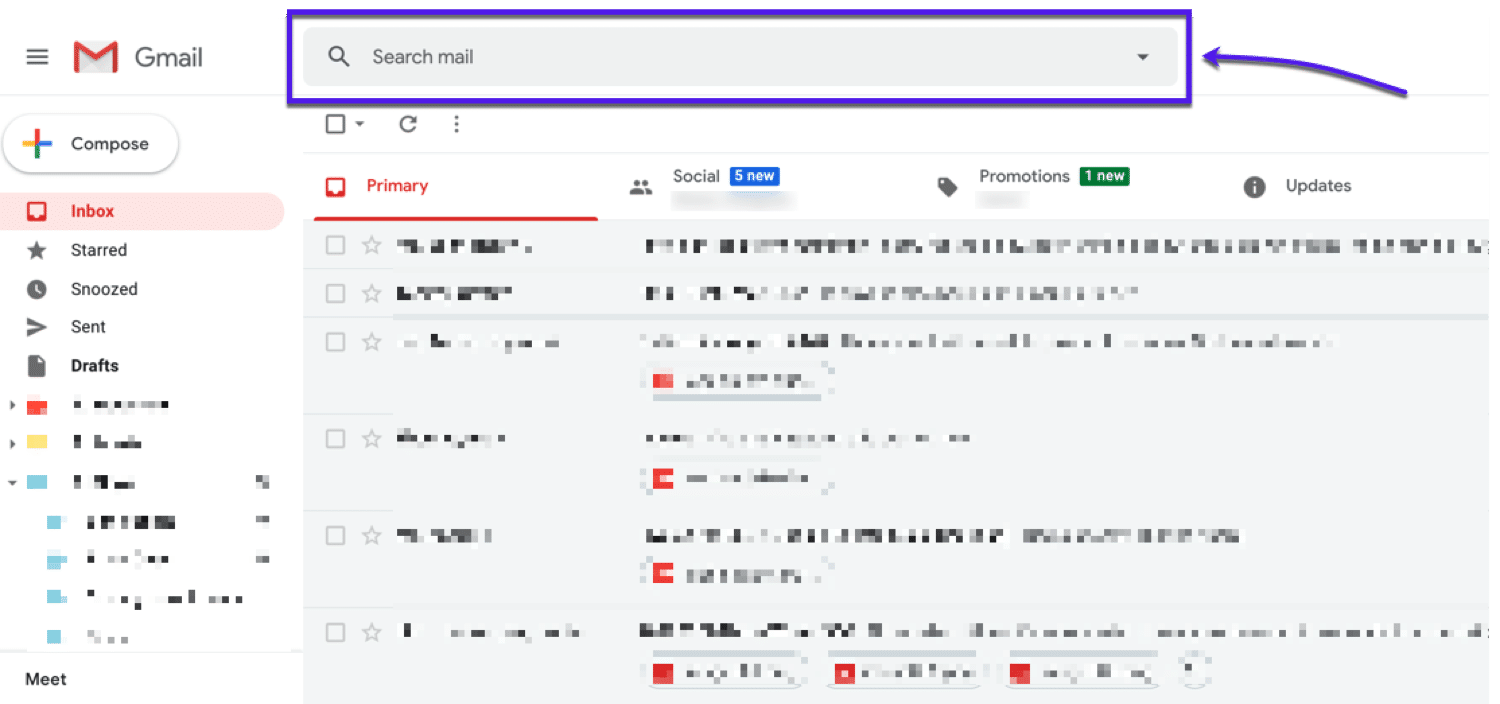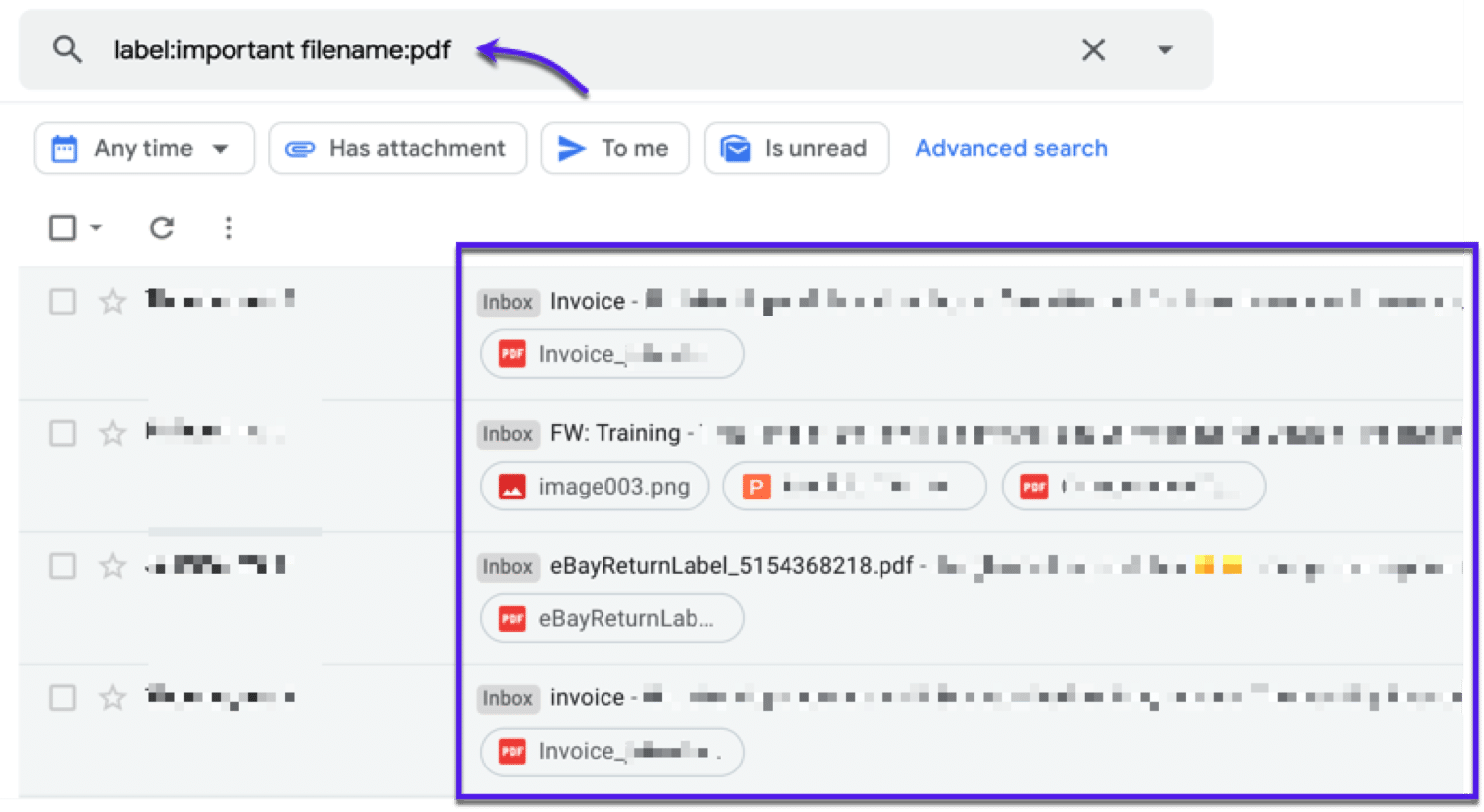If you want to dominate your inbox, you should use gmail search operators.
These are search commands for when you need to find that email or attachment you’ve lost inside gmail, quickly filter emails by a specific keyword or phrase, and many more useful features (you’ll see that in a minute).
In this article, you’ll learn what Gmail’s search operators are, why they’re useful for finding things in a cluttered inbox, as well as a collection of useful search operators you can use to up your email management game. email.
do you prefer to see the video version?
what are gmail search operators?
gmail search operators (also known as gmail search commands) are text strings made up of words and symbols that you can use in the gmail search box to help filter search results from your inbox. login/gmail.
You can also combine operators to further filter your results. By using these commands to modify your search, you can get much better gmail search results and generally find things faster.
This is what the gmail operators look like in action:

You can see the official documentation from Google here (it also lists out all the search operators you can use).
then why use gmail search operators?
If you only have a few emails inside your gmail inbox, it might not be too hard to keep track of everything.
However, for most people, this is not the case (especially if you work remotely). Chances are you have a lot of emails and even the best google workspace setup and all the useful gmail plugins in the world can’t save you sometimes.
gmail is the most popular email platform with over 1.5 billion users worldwide, and 26% of emails are opened within gmail. that’s a lot of emails.

Gmail search operators save you time. Instead of browsing through all your messages just to find the one that one thing you’re looking for, just use an operator.
Using these gmail search commands you can quickly:
- search for messages from a specific sender
- search for emails sent to a specific person
- search for specific keywords
- and more.
You can also join multiple search operators to get even more specific results (more on that later).

The One Disadvantage of Gmail Search Operators
gmail search operators can and will save you time. There is only one thing that can prevent them from working as well and it has to do with smtp ports.
let me explain:
If you access your email through a gmail account, you are free to use these operators to search for emails.
However, if you have an imap account set up with the gmail app, the results may not be as accurate when it comes to gmail search operators.
Just keep that in mind when searching your inbox for that important email you missed.
Do you want to dominate your inbox? 💪 then you need gmail search operators. learn more about these time-saving tools with this guide ⚡️click to tweet
how to use gmail search operators
Using a gmail search operator is quite easy. just click the search box (located above your inbox) and type in your carrier:

Entering your search operators or keywords for searching your inbox messages -works just like Google Search.
From here on, use whatever operator you need to filter the gmail search results. You can also combine multiple gmail search operators to further filter your results.
explanation of gmail search functions
any information you remember about that email can be added to one of the suggested parameters:
- from (who sent you the email)
- to (who received the email)
- subject (email subject name)
- has the words (any word you remember is in the email content)
- doesn’t have (anything you know the email doesn’t contain)
- has an attachment (if the email had attached documents or images )
- do not include chats (excludes any chat conversations)
- size (the size of the email )
- date within (the time range from one day to one year)
- find (the folder you want to include )
useful gmail search operators
here are the shortcuts to the parameters mentioned above that you can type in the search bar:
- -(term): exclude emails with that specific term
- (term or phrase) : search for a specific word or phrase
- +(word) – find emails containing the exact word
- after:(date) – search for emails sent on or after a specific date
- before:(date): search for emails sent before a specific date
- bcc:(name) – find sent emails that blind copied a specific person
- cc:(name) – find sent emails that copied char a specific name
- category:(category name): Search for emails in the category
- filename: (filename) or (filetype) – search for a specific file or type attachment type
- in:(folder) or (label) – search for emails in that folder or label
- subject:(word ) or (phrase) – search email for emails with that word or phrase in
- at:anywhere – search for emails in any of your gmail folders
so these are the parameters to write your gmail search operators, but let’s see some practical uses:
20 advanced gmail search operators (you’ll want to use)
Think of gmail’s search operators as shortcuts to quickly find things in your inbox.
Want to get a head start?
Check out this list of helpful gmail search operators to help you find exactly what you need:
1. view a list of all emails sent by a specific person

to:me from:[email]
If you want to see a list of all emails sent to you by a specific person, use this search operator. when you start typing a name after: suggested contacts from your company and from your google contacts will appear below the search bar. click a contact to fill in their email address.
example:
to:me from:[email protected]
2. view a list of all emails sent to a specific person

from:me to:[email]
If you want to return emails that were sent to a specific email address, use this gmail search operator. you can use the operator with a specific email address or you can type the person’s name.
In the latest version, you’ll see a list of emails that were sent to anyone with this name.
example:
to:[protected email]
3. find the emails you sent to the recipients in a particular field

cc:[email/name] bcc:[email/name]
sender and recipient searches will not apply to the cc (carbon copy) or bcc (blind carbon copy) field. to search these areas, there are separate search operators. use the cc: or bcc: operators to see a list of emails that were sent in these particular fields.
example:
cc:john bcc:[protected email]
4. find messages from specific mailing lists

list:[mailing list]
To list messages from specific mailing lists, use the list command followed by the address of the mailing list.
example:
list:[protected email]
5. access emails according to the keywords in them

The most basic search in gmail is when you don’t use any operators, just type a keyword in the search bar.
For example, if you know you have an email with a specific word in it somewhere, or there’s a topic you’re interested in searching for, just type that word or phrase into the search bar and hit enter.
example:
meeting
6. list emails that contain exact keywords

“[keyword1] [keyword2]”
If the phrase you want to search for contains more than one word, use the quotes “…” to start an exact search. this will only return emails that contain exactly the quoted phrase.
example:
“meeting agenda”
7. access emails according to the words in the subject line

subject:[keyword]
You can search emails by the content of their subject lines. By using the subject: operator followed by a word or phrase you’d like to find, you can specifically search only within the subject lines.
example:
subject:weekly
8. view a list of all emails that contained an attachment

has:attachment
You can only search for messages that have an attachment with the gmail has:attachment search operator. gmail filters your emails and only displays messages that contain an attachment of any kind, regardless of the type or format of the file.
this gmail search operator will bring up the advanced search filters:

Just select the type of attachment you want to see, and Gmail will automatically filter your inbox accordingly.
example:
has:attachment
9. find emails that contained a specific type of attachment

has:[file type]
If you use google drive and send these files frequently, you can use various search operators for specific google drive attachments. “has: drive” will show you any email with any drive attachment.
but you can also specifically use “has:spreadsheet” for google spreadsheet attachments, “has:document” for google docs, and “has:presentation” for google slideshows.
example:
has:unit has:spreadsheet has:document has:presentation
10. list of emails containing youtube videos

has:youtube
To search for messages that contain youtube videos, use the has:youtube search operator. this will display only emails that contain an embedded youtube link.

Example:
has:youtube
11. search email labels by file name or file type

label:[label] filename:[name/extension]
the file name: the gmail search operator can be used to search for emails that have an attachment with a specific title or a specific extension appearing in its name.
For example, if you remember that an email had an attachment with a specific name, you can easily find it with this operator. it can also return any email with a certain extension.
You can also focus your search on a specific email tag by combining it with the tag operator like this tag:important filename:pdf

Example: label:Work filename:pdf
tag:important filename:pdf
label:bootfilename:example.txt
12. return emails from a specific location

in:[label]
use the in: search operator to search for emails in a specific folder, for example, the spam folder or any custom folders you’ve created. You can also use the search operator in: gmail followed by “anywhere” to search your entire gmail history.
example: in: spam
in:trashcan
13. return emails in a specific category

category:[category]
You can return messages from a certain category in your gmail account with the category: search operator followed by the category name.
example: category:main
category:social
14. find flagged messages

is:[mark]
You can search for emails with a specific status in your gmail account. just put the condition after the is: search operator to return these flagged messages.
example: is:featured
has no star
is: postponed
en:read
en:unread
15. find messages from a given time period

before:[date]
most recent:[date]
old:[date]
after:[date]
If you’re looking for messages from a certain time period, you can use the before: and after: commands for emails sent before or after a specific date.
Alternatively, you can use old: instead of before: and newer: instead of after: since they are pretty much the same. the date must be given in the date format yyyy-mm-dd.
example: before:2020-03-01
16. find messages by a specific tag

label:[label name]
You can filter emails that have a specific tag. To do this, use the tag: gmail operator followed by the name of the tag you’re looking for.
example: tag:urgent
17. remove some messages from search results

-[keyword]
You can use a minus sign before the word to remove some spam from your search. this operator will exclude any email that has a specific keyword that you type after the minus sign.
example: -newsletter
18. find messages that exceed a certain size

size:[size]
If you want to list messages that are larger than a certain size in bytes, use the size: operator followed by the number of bytes. this way gmail will return all messages with attachments or content that makes them larger than the size you searched for.
You can also use abbreviations, for example, 15m for 15000000.
example: size:100000
19. list of emails that include multiple conditions

You can combine multiple conditions and create more specific and precise searches. gmail’s and operator ensures that both operator:value pairs are applied to your search.
using two conditions separated by space and without the and operator gives the same result.
example: to:[protected email] and has:attachment
20. list of emails that meet one of the conditions

putting or between two operator:value pairs will return a list of emails that meet either of the two conditions.
example: to:[protected email] or list:[protected email]
summary
now you know how to use gmail search operators. hopefully, your days of getting lost in your inbox are over.
With these features, gmail allows you to be super efficient both in managing your inbox and sending emails. Combine these gmail search operators with some solid methods for finding email addresses and you’ll be an email pro in no time.
Further Reading: Google Search Operators: 40 Commands To Know In 2021
